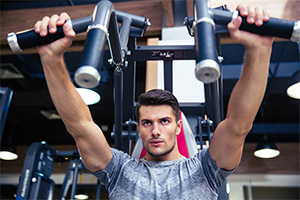
Workout recovery is just as important as the workout itself because it helps your body repair, strengthen, and prevent injuries. Here are some key recommendations for effective workout recovery:
- Cool Down Properly
After your workout, spend 5-10 minutes cooling down with light cardio (e.g., walking or cycling at an easy pace) and stretching. This helps lower your heart rate gradually and improves flexibility. - Stay Hydrated
Drink plenty of water before, during, and after exercise to replace fluids lost through sweat. Despinte how you may be feeling post workout, dehydration can lead to cramps, fatigue, and slower recovery. Electrolyte drinks can also help after intense workouts. - Nutrition for Recovery
- Protein: Essential for muscle repair and growth. Aim for 20-40 grams of high-quality protein (e.g., chicken, fish, eggs, plant-based sources), especially within an hour after exercise.
- Carbohydrates: Helps replenish glycogen stores. Pair protein with complex carbs like whole grains, fruits, or vegetables.
Healthy fats: Support overall health and reduce inflammation. Include sources like nuts, seeds, and avocados in your post-workout meals.
- Get Enough Sleep
Sleep is crucial for muscle recovery and overall performance. Generally aim for 7-9 hours of quality sleep each night to allow your body to repair tissue and build muscle. - Stretching and Foam Rolling
Stretching helps maintain flexibility and prevents muscle stiffness. Foam rolling (self-myofascial release) helps break up muscle tightness and promotes blood flow to the muscles. - Active Recovery
On rest days, engage in light physical activity like walking, swimming, or yoga. This increases blood flow to your muscles, reducing soreness and speeding up recovery. - Rest and Listen to Your Body
Give yourself adequate rest between workouts. Overtraining can lead to injuries and slow progress. Listen to your body and take extra rest days if you feel fatigued or overly sore. - Compression Therapy
Compression garments or devices (e.g., compression sleeves or boots) can help reduce muscle soreness and improve circulation, which speeds up recovery. - Massage and Mobility Work
Massages, whether done professionally or at home with tools like massage guns, can help relieve muscle tension. Mobility exercises (e.g., dynamic stretches, joint rotations) can also improve flexibility and prevent injury. - Supplements for Recovery
- Protein supplements: For convenience, whey or plant-based protein powders can help meet protein needs.
- BCAAs (Branched-Chain Amino Acids): May help reduce muscle soreness and aid recovery, though whole food protein sources are more beneficial overall.
- Omega-3s: Found in fish oil, flaxseeds, and walnuts, these help reduce inflammation and improve muscle recovery.
- Magnesium: Can reduce muscle cramps and aid in relaxation.
- Ice Baths or Contrast Baths
Alternating between cold and warm water immersion, or taking an ice bath, may rpecifically reduce inflammation and muscle soreness after intense workouts. - Mind Your Posture and Movement Patterns
Focus on good form during workouts and in daily activities to avoid muscle imbalances and injuries that can interfere with recovery. - Track Recovery with Technology
Fitness trackers or apps that monitor heart rate variability (HRV), sleep patterns, and stress levels can further help you better understand your recovery needs and adjust training intensity.
Implementing these strategies consistently will ensure that you recover effectively and continue to progress in your fitness journey.

